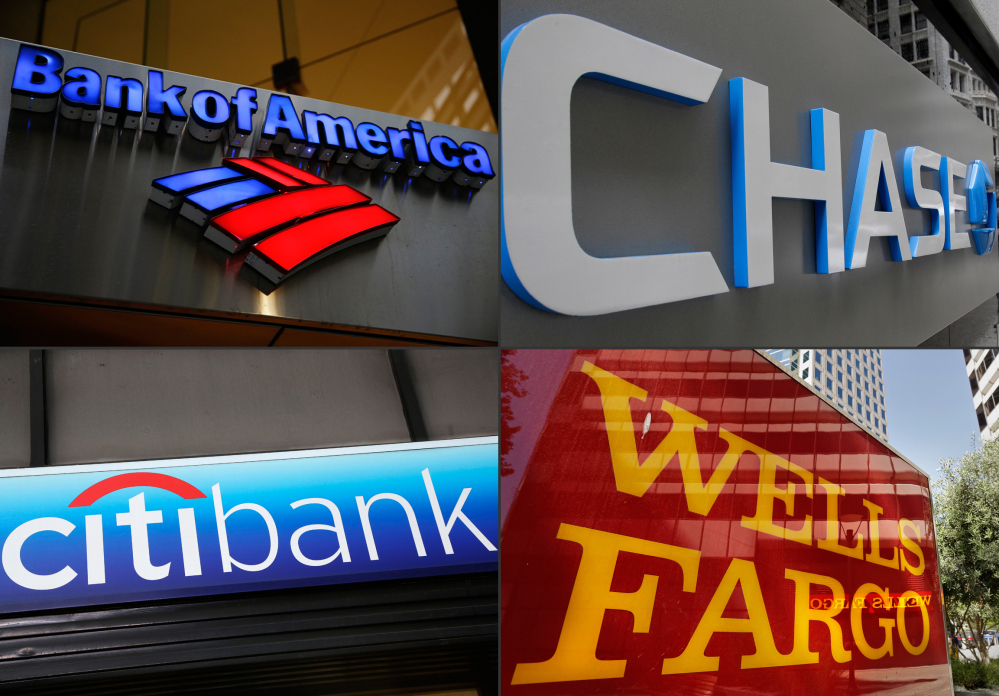WASHINGTON — All of the nation’s 31 largest banks are adequately fortified to withstand a severe U.S. and global recession and keep lending, the Federal Reserve said Thursday.
Results of the Fed’s annual “stress tests” show that as a group, the 31 banks are stronger than at any time since the 2008 financial crisis struck, thanks to a steadily recovering economy. The results build on positive outcomes from last year’s tests.
Some industry analysts say the most critical tests for the industry will come next week. That’s when the Fed will announce whether it’s approved each bank’s request, if one has been made, to raise dividends or repurchase shares. Those results will be based on how each bank would fare in a severe recession if it took such steps.
“This week’s tests are a more modest standard than what we will get next week,” said Cayetano Carrasco-Gea, senior director at Moody’s Analytics. “We will see a few banks fail next week.”
The banks undergoing the stress tests included JPMorgan Chase & Co., Bank of America Corp., Citigroup Inc. and Wells Fargo and Co. – the four biggest U.S. banks by assets.
The Fed has conducted stress tests of the largest U.S. banks since 2009, when the tests were designed to restore badly shaken confidence in the U.S. financial system. The government had created a $700 billion bailout fund to stabilize hundreds of banks after the financial crisis deepened the worst economic downturn since the 1930s.
Under the stress tests’ hypothetical “severely adverse” scenario, the United States would endure a catastrophic recession in which unemployment would reach 10 percent, home prices would sink 25 percent, the stock market would drop nearly 60 percent and market volatility would rise significantly. The tests compare the losses projected for each bank with the capital it holds against losses.
The Fed said that under that scenario, the 31 banks would suffer combined loan losses of $340 billion. It estimated that losses of that magnitude would reduce the 31 bank’s capital from 11.9 percent of its loans as of the third quarter last year to 8.2 percent at the end of 2016.
The 8.2 percent level of capital is much higher than the 5.5 percent that the banks held at the start of 2009, right after the financial crisis hit.
Industry lobbyists applauded the results Thursday and began a public push to get the Fed to approve next week the banks’ plans to raise dividends or repurchase shares.
Frank Keating, president and CEO of the American Bankers Association, said in a statement that the results should allow banks “to pay dividends that help attract investors to fund future growth.”
Since the financial crisis, industry profits have been steadily rising, and banks have been starting to lend more freely. Last year, Zions Bancorp, a regional institution based in Salt Lake City, was the only institution that failed the Fed’s stress test.
Send questions/comments to the editors.



Success. Please wait for the page to reload. If the page does not reload within 5 seconds, please refresh the page.
Enter your email and password to access comments.
Hi, to comment on stories you must . This profile is in addition to your subscription and website login.
Already have a commenting profile? .
Invalid username/password.
Please check your email to confirm and complete your registration.
Only subscribers are eligible to post comments. Please subscribe or login first for digital access. Here’s why.
Use the form below to reset your password. When you've submitted your account email, we will send an email with a reset code.